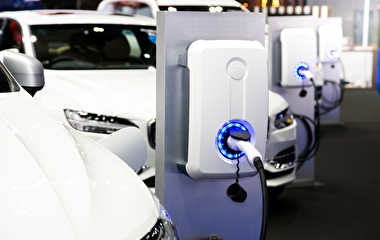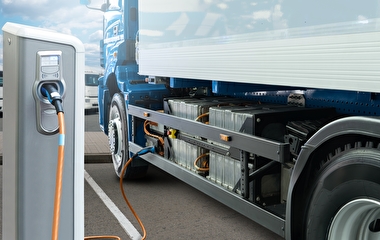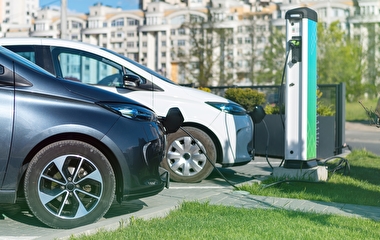aloft for days at a time. Photo: Shutterstock
Unmanned aerial vehicles (UAVs) are poised to play an important role in the world of transportation, with the capability to do everything from deliver small packages to inspect bridges, monitor traffic flows, and survey transportation systems after a disaster. However, one sticking point of UAV use has been the balance between flight time and maneuverability.
“Choosing a UAV for an application has typically required compromise between the flight time and long-range capabilities of a fixed-wing aircraft versus the maneuverability and stationary characteristics of a multi-rotor platform that can take off vertically and hover like a helicopter,” says Nikolaos Papanikolopoulos, professor in the Department of Computer Science.
Recently, new UAVs have been developed that use solar cell technology coupled with energy storage and new propulsion technologies to reach full-day or even multi-day flight—but those drones use a fixed-wing design in order to have enough surface area for the solar panels. Now, U of M researchers led by Papanikolopoulos are working on a technology that offers the best of both worlds: a UAV that can gather and store solar energy as a fixed-wing aircraft and then transform into a “multi-rotor” state in order to perform those helicopter-like takeoffs, landings, and maneuvers.
“The UAV we created removes the individual limitations and combines the strengths of both systems,” Papanikolopoulos says. “In its multi-rotor state, the aircraft cannot supply enough energy from solar power alone and will rely on stored energy. Once stored energy is close to being depleted, the aircraft will transition into a fixed-wing state where the on-board batteries can recharge and the process can repeat.”
Another advantage of the new UAV is its vertical takeoff and landing capabilities. “This allows our UAV to wait on the ground for suitable solar conditions and land in the absence of them, which makes the ability to achieve multi-day operation feasible,” he says.
A paper by the research team describes the design for the hybrid UAV, outlining and analyzing several important considerations in the design of the aircraft, including its stability and weight distribution and the mechanical transition between flight modes. In addition, the researchers created a prototype to demonstrate the aircraft operating in its multi-rotor configuration.
Currently, work is under way to improve the prototype and validate its operation in fixed-wing and transition states. The research team is also continuing to improve the aircraft’s propulsion system and expanding the energy model to include the transition between fixed-wing and multi-rotor configurations.
This research is supported by grants from the National Science Foundation. The paper—“SUAV:Q – A Hybrid Approach to Solar-Powered Flight”—was published in the proceedings of the Institute of Electrical and Electronics Engineers’ International Conference on Robotics and Automation (2016).



